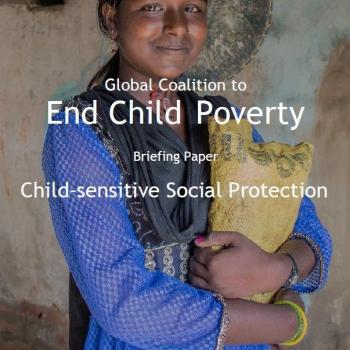
Half of the world’s people who live in extreme poverty are children, and their experience of poverty, vulnerability and social exclusion is different from that of adults. Small differences in the design and implementation of social protection programmes can make a huge difference for children. Making social protection child-sensitive has the potential to benefit not only children, but also their families, communities and national development as a whole.
This policy brief from the Global Coalition to End Child Poverty defines the principles of child-sensitive social protection (CSSP) and broadly summarises;
How is Child-sensitive Social Protection pursued and implemented Social protection and priority sectors for the life cycle of children How can CSSP be achieved The role of the coalition and its partners' in helping to advance CSSP
Half of the world’s people who live in extreme poverty are children, and their experience of poverty, vulnerability and social exclusion is different from that of adults. Small differences in the design and implementation of social protection programmes can make a huge difference for children. Making social protection child-sensitive has the potential to benefit not only children, but also their families, communities and national development as a whole.
This policy brief from the Global Coalition to End Child Poverty defines the principles of child-sensitive social protection (CSSP) and broadly summarises;
How is Child-sensitive Social Protection pursued and implemented Social protection and priority sectors for the life cycle of children How can CSSP be achieved The role of the coalition and its partners' in helping to advance CSSP
